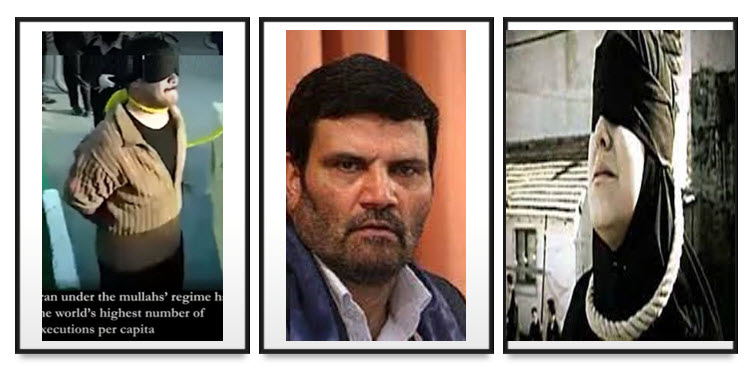
Over the past 44 years, the Iranian regime has seen judges renowned for their brutal executions and imprisonments.
In a grim reflection of Iran’s judicial system, three protesters from the 2022 demonstrations were handed death sentences: Mohsen Shekari, Mohammad Ghobadlou, and Saman Saidi. The name signing their orders? A familiar one, Judge Abolqasem Salavati, infamously known as ‘Khalkhali II’ and ‘The Judge of Death.’
Historic figures such as Sadegh Khalkhali, who executed groups at the Kurdistan airport, and the “death commission” of the 1988 prison massacre, have cast long shadows. Salavati’s verdicts echo these somber chapters.
Accused individuals frequently lack legal representation, are subjected to coerced confessions, and are heavily influenced by interrogators from the Ministry of Intelligence and Revolutionary Guards.

Salavati’s judgments, critics claim, often come from rushed proceedings.
The Supreme Court confirmed Salavati’s death sentence for Mohsen Shekari, marking him as the first individual executed from the 2022 protests. Salavati’s reign of sentencing has particularly targeted members and supporters of the People’s Mojahedin of Iran (PMOI/MEK). A staggering statistic from Iran’s Prisons Atlas shows Salavati being responsible for 322 sentences, which equate to a total of 1,515 years of imprisonment for the defendants. Of these trials, 91 did not allow the defendants access to their chosen lawyers.
Salavati, a native of Tuyserkan in Hamadan province, has served the Iranian judicial system in various capacities. He began as part of the judicial police in Kurdistan province in the late 1980s and eventually headed the 15th branch of the Tehran Revolutionary Court, appointed by another notorious judge, Saeed Mortazavi.
He presided over political opponents’ trial proceedings, orchestrating rehearsals before the televised court sessions. Among his controversial death sentences was that of Zahra Bahrami, a Dutch-Iranian citizen, accused under dubious charges after the Ashura protests of 2009.

In the aftermath of the 2009 elections, Salavati’s name became even more prominent.
Salavati’s troubling track record continues, with countless stories of truncated court sessions, denied legal representation, and coerced confessions. His verdicts often carry the heaviest of sentences, with charges such as ‘Moharebeh’ (enmity against God) and ‘sedition.’
Despite these condemnations, Salavati receives accolades within Iran by mullahs. A letter from the Vice President of Human Resources and Cultural Affairs of the Judiciary extols his efforts in justice and protection of rights, showcasing the regime’s backing.
Internationally, however, Salavati finds himself on the sanctions lists of both the United States and the European Union, an evident statement on global concerns surrounding his decisions and consistent human rights violations. This juxtaposition of local applause and international critique underscores the dire state of judicial integrity in Iran.

MEK Iran (follow us on Twitter and Facebook), Maryam Rajavi’s on her site, Twitter & Facebook, NCRI (Twitter & Facebook), and People’s Mojahedin Organization of Iran – MEK IRAN – YouTu
